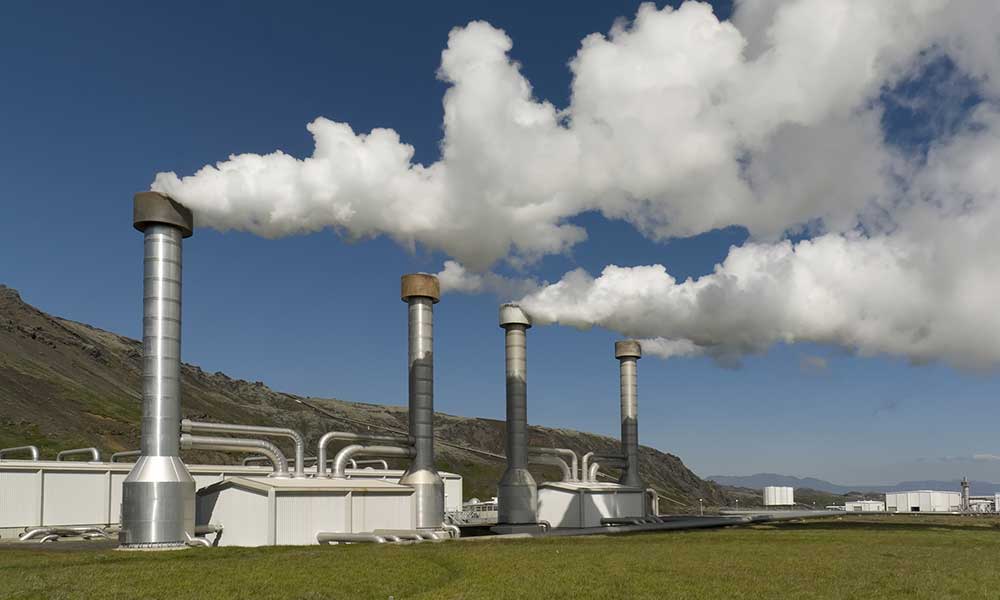Investors are in search of alternative energy investments, and geothermal energy stocks have been apart of the conversation.
Geo means earth, and thermal means heat. And heat and energy extracted from the earth’s crust is geothermal energy.
If we talk about the potential of geothermal energy, nuclear might look like a midget. A 2006 MIT study stated that geothermal power has the theoretical capability to power the United States for 130,000 years.
This renewable energy has immense potential and is still largely untapped, accounting for less than 1% of global energy. Why? There are only two plausible explanations. Either geothermal has environmental consequences or it is not economically viable. Let’s explore below!
How Does Geothermal Energy Work?
Geothermal is the next big carbon-free renewable energy. It can power and heat buildings of all shapes and sizes, with just 25% of the electricity used by traditional heating systems.
Unlike wind and solar, it doesn’t depend on climate for electricity generation, nor does it need a large surface area. This shows that geothermal is a blessing once the power plant is operational. That is where the challenge comes.
To understand the challenge, you need to know how a geothermal plant works. Earth’s core is hot, and it heats up underground water reservoirs.
The geothermal producer digs well deep into the earth’s crust to access the steam of the underground water. It uses this steam to power turbines that are connected to an electricity generator.
Once the steam cools off and turns into the water, the plants push the water back into the ground to be heated up again. There are three types of geothermal power stations; dry steam, flash steam and binary cycle.
Challenges of Geothermal Energy
Now that you know how geothermal energy is produced, there are three challenges; location, machinery, and cost.
Location – A 2017 report by the International Renewable Energy Agency state that geothermal energy typically costs between $1,870 per kW and $5,050 per kW, depending on the site. Hence, these power plants are in areas where underground heat is closer to the surface, like hot springs, geysers, or near a volcano. Such locations are uninhabitable, which means transmission lines need to be built to transmit this electricity to nearby cities and towns.
Machinery – The next big challenge is making drilling cost-efficient. Many producers drill holes in untapped geothermal sources to see if the machinery can withstand the underground heat. Many advancements are being made to make drilling holes cost-efficient.
Cost – The biggest challenge in tapping geothermal power is the economic viability of the project. Exploration and building plant and transmission infrastructure require significant capital.
Only big companies with tremendous capital and the patience to wait for several years invest in geothermal projects. Hence, most public companies investing in geothermal projects are traditional oil and gas stocks like Chevron and Calpine. They have the capital and drilling expertise. But geothermal accounts for just a fraction of their revenue. Other than oil and gas companies, private companies and startups, like Bill Gates’ Fervo Energy and GreenFire Energy, invest in geothermal. So if you are looking for ESG investments in geothermal energy, there are not many options available.
I have identified two publicly traded stocks that have decent exposure to geothermal energy.
Best Geothermal Energy Stocks
1. Ormat Technologies (NYSE: PII)

Ormat Technologies is a pure-play geothermal stock that generates electricity from geothermal and solar power plants. It also manufactures equipment for geothermal power plants and builds energy storage units. Ormat’s first-quarter adjusted EBITDA surged 8.7% to $107.9 million as revenue surged 10.4%. It is on track to deliver an annual Adjusted EBITDA of $500 million by the end of 2022.
Ormat plans to increase its combined geothermal, energy storage and solar generation portfolio to more than 1.5 GW by the end of 2023. The company’s strong fundamentals indicate that geothermal projects can be a viable investment.
Ormat’s stock surged 38% between February 23 and April 19 as all energy stocks surged due to fears of energy supply shortage from the Russia-Ukraine war. The stock has corrected 11% since April 19, making it a good entry point to get exposure to geothermal potential.
2. Polaris Infrastructure (NYSE: PII)
![]()
Polaris Infrastructure is Canada’s renewable energy producer that operates a 72 MW geothermal facility in Nicaragua, 32 MW hydroelectric facilities in Peru, and 13 MW solar projects. It is safe to say Polaris is a geothermal stock, given its higher exposure to geothermal than hydro and solar. Its first-quarter revenue and adjusted EBITDA surged 2.5% and 2%, respectively. Polaris stock has surged 28% since the Russia-Ukraine war broke.
Best Geothermal Energy Stocks: Final Takeaway
The geothermal industry is still at a nascent stage and is not yet economically feasible. Even with government subsidies, geothermal projects are not economically feasible. Hence, there are not many pure-play geothermal companies as they don’t attract investors.
Geothermal has tremendous potential to be a game-changer if startups can build a technology that can cost-effectively harness this power. Wind and solar also started on the same foot 10 years back where cost was their biggest drawback. But cost reduced over the years and now they are a viable investment attracting investors’ attention.
Unless you have a boatload of money and are ready to take one for science, geothermal stocks are not a viable investment. The above two stocks are in green due to renewed interest in renewables. But solar and wind are better investment options to get handsome returns in 10 years.









